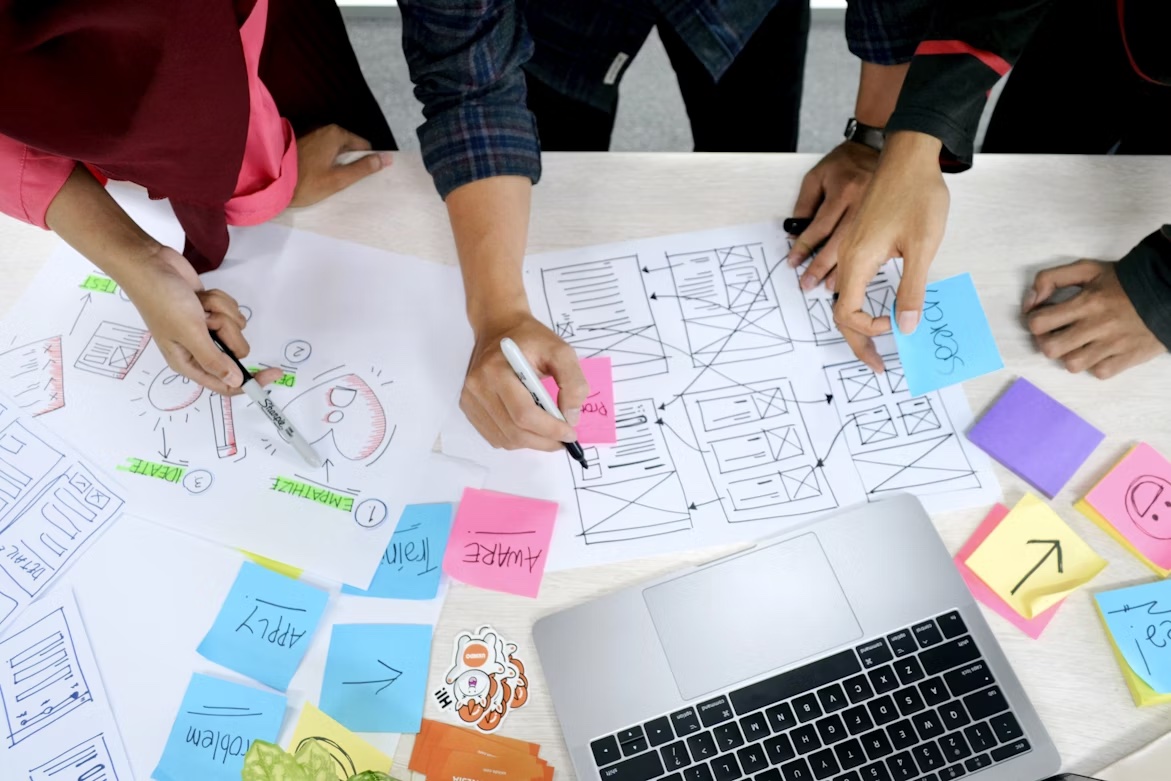
Every organization, team, and individual faces challenges that feel messy, overwhelming, or even unsolvable. What if, instead of being stuck, you had a structured way to turn those challenges into opportunities? That’s the promise of design thinking—a human-centered approach to innovation that blends creativity, empathy, and experimentation.
Design thinking isn’t just for designers—it’s a way of thinking and working that anyone can use. At its heart, it’s about understanding people first and then creating solutions that truly meet their needs.
The process is typically described in five stages:
This cycle is iterative, not linear. Teams loop back, rethink, and adapt as they learn more. (Check out our free Design Thinking Research Planning Worksheet to get started.)
We live in a time of constant change: new technologies, shifting customer expectations, and unpredictable challenges. Traditional problem-solving methods, which often focus on efficiency and expertise, aren’t always enough.
Design thinking offers a different path—it brings empathy and experimentation into the process. Instead of asking, “What can we do with what we already know?” it asks, “What do people really need, and how might we create it?”
This approach has sparked breakthroughs across industries:
(You can read one of our case stories here: From Seeds to Solutions: How Design Thinking is Helping Farmers Thrive.)
In one recent workshop with an agricultural company, a team explored how they might better support smallholder farmers. By applying design thinking, they moved beyond assumptions and discovered hidden challenges farmers faced daily. The result? Ideas that went far beyond selling products—like creating knowledge-sharing platforms and tools tailored to farmers’ unique contexts.
Another workshop-focused article shows how design thinking helps teams reframe projects and prioritize user needs — for example, revealing that onboarding (not features) was the real pain point for one client. By focusing on empathy and testing small changes, they improved customer satisfaction and retention dramatically.
These stories remind us: innovation doesn’t always mean creating something big and new. Sometimes, it’s about uncovering small shifts that make a huge difference.
Even without a formal workshop, you can bring design thinking into your work. Try these steps:
Design thinking is more than a process—it’s a mindset. It asks us to be curious instead of certain, open instead of defensive, and collaborative instead of siloed. It teaches us that progress often comes not from finding the “right” answer, but from learning, adapting, and co-creating with others.
When you approach challenges this way, what once felt like a roadblock can become an opportunity to create something better—for your team, your customers, and your community.
👉 Ready to try it out? Join our Intro to Design Thinking Workshop or download our free worksheet to kickstart your project today.
Want to dive deeper? Explore resources from IDEO and the Stanford d.school for more tools and case studies.
📩 Sign up for our newsletter, Fieldnotes, where we share practical tools, fresh insights, and real-world stories from our design thinking work. Subscribe here.